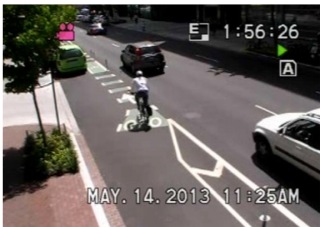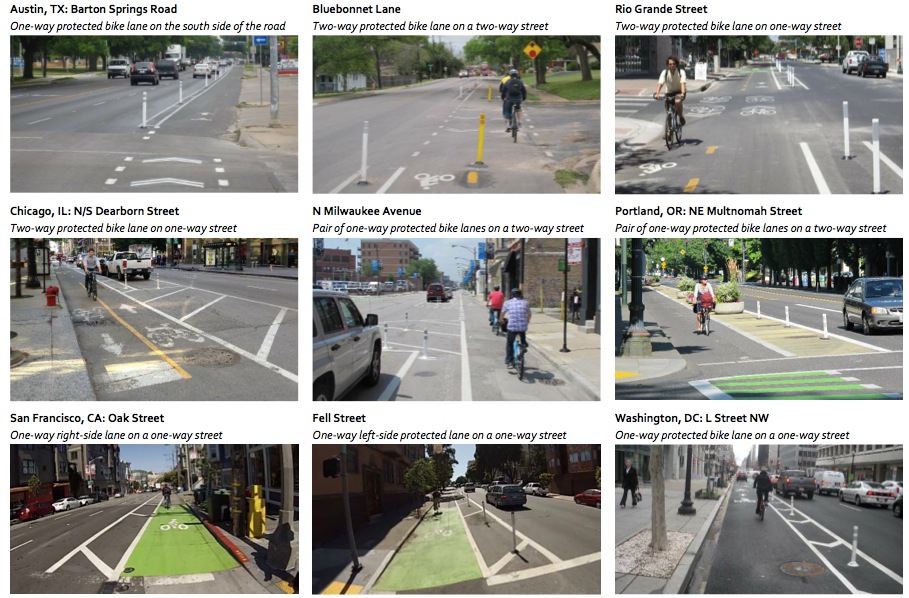
A new study released today, which is being touted by its funders as “groundbreaking,” shows that a sampling of protected bike lanes in American cities have been a resounding success.
The facilities included in the sample — hand-picked bikeways from Austin, Washington D.C., San Francisco, Chicago and Portland — showed a massive increase in bike traffic, received high marks for improving safety of all road users, and have won over the hearts and minds of people whether they use them or not.
Lessons from the Green Lanes: Evaluating Protected Bike Lanes in the U.S. (PDF) was funded in part by People for Bikes and the research was completed at Portland State University’s National Institute of Transportation and Communities (here’s more background on the study).
The 179-page report includes detailed analysis of nine different bike facilities (see above) including NE Multnomah Street in Portland. Researchers used a combination of video (204 hours of it), count data, and surveys of users and nearby residents.
Advertisement
Here are some of the key findings:
- Over a quarter of riders indicated they are riding more in general because of the protected bike lanes.
- In its first year alone, a protected bike lane increases bike traffic on a street by an average of 72%
- 96% of people riding in protected bike lanes felt safer on the street because of the lanes
- 76% of people living near protected bike lanes support the facilities in additional locations, whether they use them or not
- Drivers thought traffic became more predictable after protected lanes were installed. Most drivers said congestion and drive time didn’t change.
- Parking is a key issue when street space is reassigned and cities. The impact to parking was the most negative perception, with about 30-55% of residents indicating the impacts to parking were negative, even in cases where a minimal amount of parking was removed, or parking was increased.
- In the 144 hours of video analyzed for safety, studying nearly 12,900 bicycles through the intersections, no collisions or near collisions were observed. This included both intersections with turn lanes and those with signals for bicycles.
- Over half the residents surveyed (56%) felt that the street works better for “all people” due to the protected bike lanes, while only 26% felt the street works less well.
- Nearly three times as many residents felt that the protected bike lanes had led to an increase in the desirability of living in their neighborhood, as opposed to a decrease in desirability (43% vs 14%).
One of the issues slowing protected bike lane progress in many American cities (including Portland) is that designs and best practices are still all over the map. What’s the best method of separation? Planters? Paint? Those wobbly, reflective posts? What’s the best way to handle intersections? Bike-only signal phases? “Mixing zones”? The National Association of City Transportation Officials’ (NACTO) Urban Bikeway Design Guide has helped in that regard, but this research will provide city traffic planners and engineers valuable insight into what works best.
That type of fine-grain analysis and compare/contrast of real-world usage on facilities in five very different cities, combined with the surveys (2,301 of nearby residents and 1,111 of actual bikeway users) to better understand how people feel about the bikeways, this study will likely become an important tool for engineers, policy makers, and advocates for years to come.
According to lead research Chris Monsere, “This study fills a critical gap in the research and can influence national guidance on protected bike lanes. Policymakers can look to this research to see how they could best use protected bike lanes to meet their mobility, safety and economic goals.”
There are tons of interesting nuggets in this study. Take a closer look for yourself (PDF) and stay tuned for more coverage.


